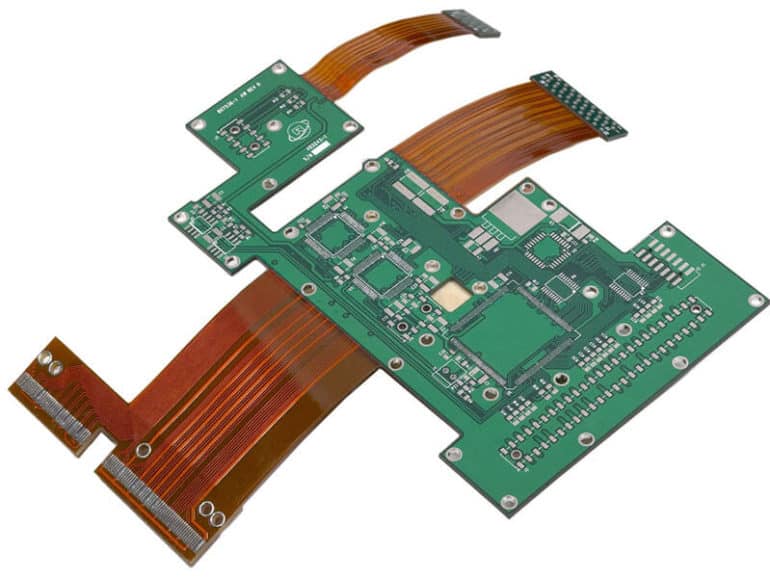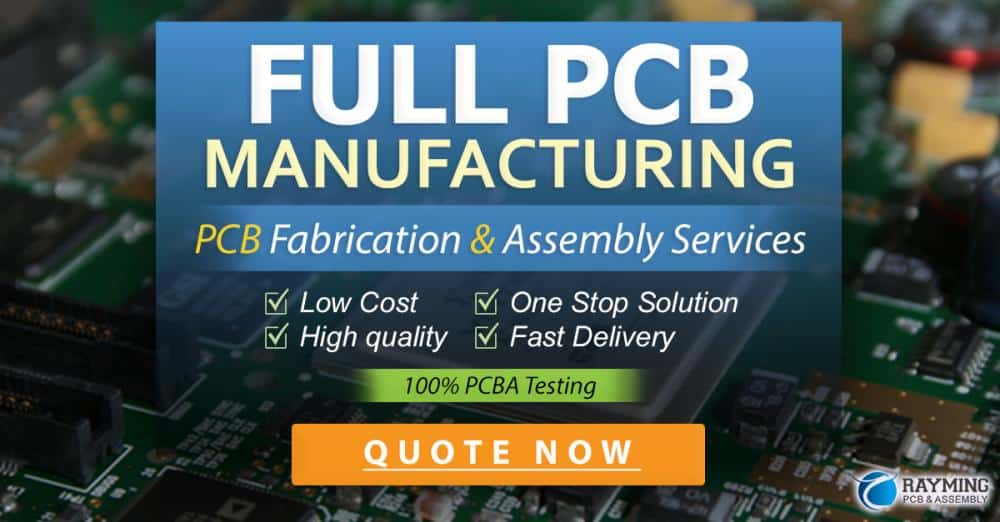Rigid-flex printed circuit boards (PCBs) are a hybrid of traditional rigid PCBs and flexible circuits, offering the benefits of both technologies in one. They consist of multiple layers of flexible circuit substrates attached to one or more rigid boards. The flexible layers can be bent or folded to fit into tight spaces, while the rigid sections provide support and stability for components.
Rigid-flex PCBs have become increasingly popular in recent years due to their ability to save space, reduce assembly time, and improve reliability. They are commonly used in applications where traditional rigid PCBs would be too bulky or inflexible, such as in medical devices, aerospace systems, and automotive electronics. With the rise of the Internet of Things (IoT) and other connected technologies, the demand for compact and reliable PCBs is only expected to grow.
What is a Rigid Flexible Printed Circuit Board?
A Rigid Flexible Printed Circuit Board (RFPCB) is a hybrid board that combines the benefits of both rigid and flexible PCBs. RFPCBs are composed of multiple layers of flexible circuit substrates attached to one or more rigid boards. This design allows for the board to bend and flex while still maintaining its shape and stability.
Construction
RFPCBs are constructed using a combination of flexible and rigid materials. The flexible layers are made of polyimide or polyester film, while the rigid layers are made of fiberglass or other composite materials. The layers are bonded together using an adhesive layer, and the flexible layers are typically connected to the rigid layers using plated through-holes.
Benefits
RFPCBs offer several benefits over traditional rigid or flexible PCBs. The flexibility of the board allows for it to be used in applications where traditional PCBs would not be suitable, such as in wearable devices or medical implants. RFPCBs are also more durable than traditional PCBs, as they are less prone to cracking or breaking due to their ability to bend and flex. Additionally, RFPCBs can reduce the size and weight of a device, as they can be designed to fit into tight spaces or conform to a specific shape.
Applications
RFPCBs are commonly used in a variety of industries, including aerospace, automotive, medical, and consumer electronics. They are often used in applications where space is limited or where the board needs to be able to bend or flex, such as in aircraft control systems, automotive sensors, and medical implants. RFPCBs are also used in consumer electronics, such as smartphones and tablets, where their flexibility and durability can help to improve the overall performance and lifespan of the device.
In conclusion, RFPCBs offer a unique combination of flexibility, durability, and size reduction that make them ideal for a variety of applications in multiple industries.
Design Considerations for Rigid Flexible PCBs
When designing a rigid flexible printed circuit board (PCB), there are several important considerations to keep in mind. In this section, we will explore some of the key design considerations for rigid flexible PCBs.
Flexibility vs Rigidity
One of the primary considerations when designing a rigid flexible PCB is the balance between flexibility and rigidity. While the flexible portions of the PCB need to be able to bend and fold, the rigid portions need to maintain their shape and stability. It is important to strike the right balance between flexibility and rigidity in order to ensure that the PCB can function properly.
Layer Stackup
Another important consideration when designing a rigid flexible PCB is the layer stackup. The layer stackup refers to the arrangement of the layers of the PCB. In a rigid flexible PCB, the layer stackup needs to be carefully designed in order to accommodate the flexible portions of the PCB. This may involve using different materials or thicknesses for different layers.
Bend Radius and Foldability
The bend radius and foldability of a rigid flexible PCB are also important considerations. The bend radius refers to the minimum radius that a flexible portion of the PCB can bend without causing damage. Foldability refers to the ability of the PCB to fold along a specific axis. These considerations need to be carefully taken into account in order to ensure that the PCB can function properly and withstand the stresses of use.

Connector Selection
Finally, the selection of connectors is an important consideration when designing a rigid flexible PCB. The connectors need to be able to accommodate the flexible portions of the PCB while also providing a stable connection. It is important to select connectors that are compatible with the specific requirements of the PCB design.
In summary, designing a rigid flexible PCB requires careful consideration of several key factors, including flexibility vs rigidity, layer stackup, bend radius and foldability, and connector selection. By taking these considerations into account, designers can create robust and reliable rigid flexible PCBs that meet the specific needs of their applications.
Manufacturing Process
Material Selection
The first step in the manufacturing process of rigid flexible printed circuit boards is selecting the right materials. The materials used in the manufacturing process include copper, polyimide, and adhesive. The thickness of the copper, polyimide, and adhesive varies depending on the requirements of the circuit board.
Drilling and Plating
After the materials have been selected, the next step is drilling and plating. The drilling process involves creating holes in the rigid flexible printed circuit board. These holes are used for components and electrical connections. The plating process involves adding a layer of copper to the holes to create electrical connections.
Lamination and Bonding
The third step in the manufacturing process is lamination and bonding. The layers of copper, polyimide, and adhesive are laminated together to create a single rigid flexible printed circuit board. The bonding process involves using heat and pressure to bond the layers together.
Testing
The final step in the manufacturing process is testing. The rigid flexible printed circuit board is tested to ensure that it meets the required specifications. The testing process involves checking for electrical continuity, insulation resistance, and other parameters.
In summary, the manufacturing process of rigid flexible printed circuit boards involves material selection, drilling and plating, lamination and bonding, and testing. Each step in the process is critical to ensuring that the final product meets the required specifications.
Testing and Quality Control
Electrical Testing
Rigid flexible printed circuit boards undergo electrical testing to ensure that they meet the required specifications and standards. The testing process involves checking for continuity, impedance, and signal integrity. The boards are also checked for short circuits, open circuits, and other faults. The electrical testing is carried out using automated test equipment (ATE) that is capable of detecting faults and deviations from the required specifications.
Visual Inspection
In addition to electrical testing, rigid flexible printed circuit boards undergo visual inspection. The visual inspection is carried out to check for defects such as scratches, cracks, and other physical damage. The boards are examined for defects that can affect their functionality and reliability. The visual inspection is carried out by trained professionals who use specialized equipment such as microscopes and magnifiers.

Reliability Testing
Reliability testing is carried out to ensure that rigid flexible printed circuit boards can withstand the rigors of their intended applications. The boards are subjected to various environmental conditions such as temperature, humidity, and vibration. The reliability testing is carried out using specialized equipment that simulates the intended operating conditions of the boards. The boards are also subjected to accelerated life testing to determine their expected lifespan.
Overall, testing and quality control are critical aspects of the manufacturing process for rigid flexible printed circuit boards. The testing process ensures that the boards meet the required specifications and standards, while quality control measures ensure that the final product is reliable and durable.
Cost Considerations
When it comes to rigid-flex PCBs, cost is an important factor to consider. The cost of a rigid-flex PCB is generally higher than a traditional rigid PCB due to the additional processes and materials involved. However, the benefits of a rigid-flex PCB can often outweigh the higher cost.
One factor that can impact the cost of a rigid-flex PCB is the number of layers. The more layers a PCB has, the more expensive it will be. Additionally, the complexity of the design can also impact the cost. Designs with intricate routing and tight spaces will require more time and effort to manufacture, increasing the cost.
Another cost consideration is the materials used. Rigid-flex PCBs require both rigid and flexible materials, which can be more expensive than traditional rigid PCB materials. However, using high-quality materials can also improve the reliability and lifespan of the PCB, potentially saving costs in the long run.
It’s important to work closely with your PCB manufacturer to ensure that your design is optimized for cost-effectiveness. They can provide valuable insights and recommendations to help reduce costs without sacrificing quality or performance.
Comments are closed